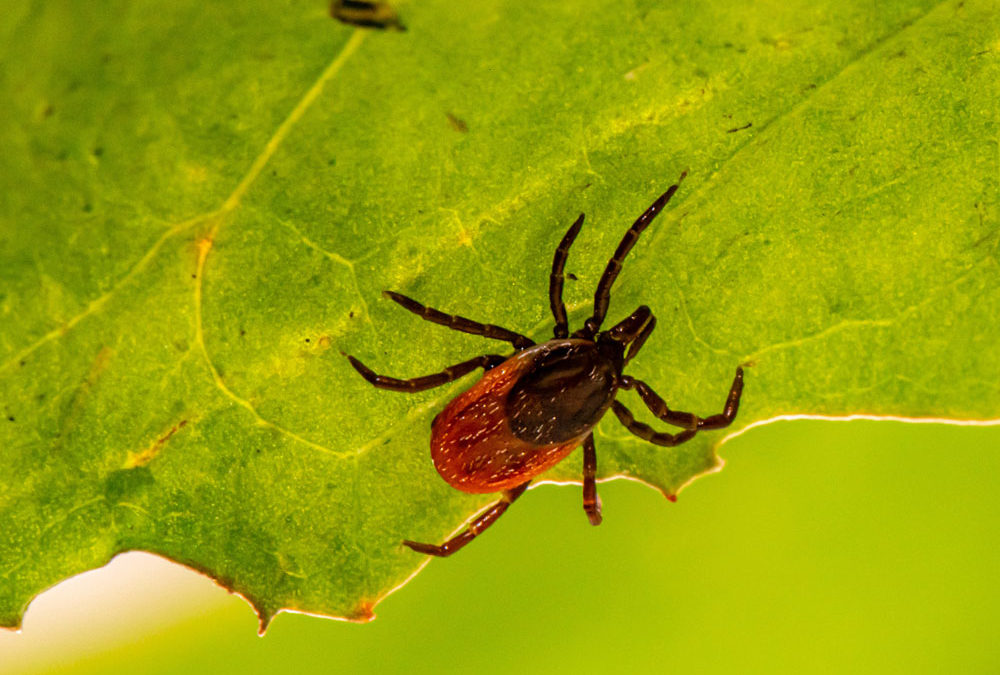If you spend time outdoors, whether it be your backyard or hiking through a nature preserve, you need to be aware of ticks and take steps to protect yourself. Ticks are found everywhere across the United States. Depending on which region you live in, ticks can be a pest year-round. But for the most part, ticks become most active as the weather gets warmer. Ticks are more than a nuisance. Most bites never create more than some swelling. But ticks are parasites and can transmit blood-borne diseases like Lyme disease, Babesiosis, and Rocky Mountain spotted fever.
Are Ticks Poisonous? Ticks are parasitic arachnids and are part of spider species. Most do not transmit harmful pathogens. To some extent, their bites are harmless, and you might not need immediate medical treatment. However, some tick species (such as deer tick & wood tick) can carry and transmit disease but only do so in less than two percent of cases.
How to spot a tick? Although ticks will burrow into the skin in order to suck on a person’s blood, their bite is painless. Because you won’t feel them bite, you’ll need to look for them carefully. Perform full-body tick checks after being outdoors in areas where ticks may be present, even in your own yard. An infected tick has to stay attached for 24 hours before there is any chance of transmitting the organism that causes Lyme disease, so finding one right away is important! Check all parts of the body carefully, especially the armpits, behind the knees, scalp, in and around the ears, inside the belly button, and groin.
How Do I Get Rid Of A Tick?
If you have found ticks attached to your skin, don’t panic. Get a pair of narrow tweezers and rubbing alcohol. Now follow the below steps carefully:
- Use alcohol to clean the area around the tick bites.
- Place tweezers right down on your skin. Try to grab the tick’s head.
- Pull up with a firm & steady force.
- Once the tick is out, clean the bitten area again with an antiseptic solution, soap, or water.
How you can identify tick bite symptoms?
Tick bites are painless. You may not even notice their bite as it happens. Here are the signs and symptoms to look for. Visit your doctor if you have a rash or fever within 30 days of removing a tick or after possible tick exposure. It is important to tell them when and where you may have come into contact with the tick.
- a red spot or rash
- mild fever
- muscle or joint pain
- Stiffness in the neck area
- Full-body rash (allergic reaction)
- Headache or nausea
- body weakness
- Feeling cold
- swollen lymph nodes
Tick Bite Prevention Tips
The best way to prevent exposure to ticks is to wear clothing that covers your arms and legs. When you are in the woods, keep to the center of the trail, where ticks are less likely to be (ticks tend to stay in shrubs and bushes). So next time when you go for a walk, running, or hiking, do keep the following points in mind:
- Wear full sleeves shirt and long trousers to cover your arms & legs – your clothes are the first line of defense.
- Shower soon after your outdoor activities.
- Wear light-colored clothing –this makes it very easy to spot ticks on your body.
- Spray DEET (20% to 30% solution) on your skin
- Treat clothing with permethrin, a medicine, and chemical used as a repellent.
Don’t let the fear of ticks keep you from spending time outdoors. The risk of disease transmission is small. Take precautions before you go out, and check for ticks when you come back in. Consider applying pesticides that kill ticks in the springtime to reduce the number of ticks in your yard. Speak to or hire a professional pesticide company before using pesticides.

